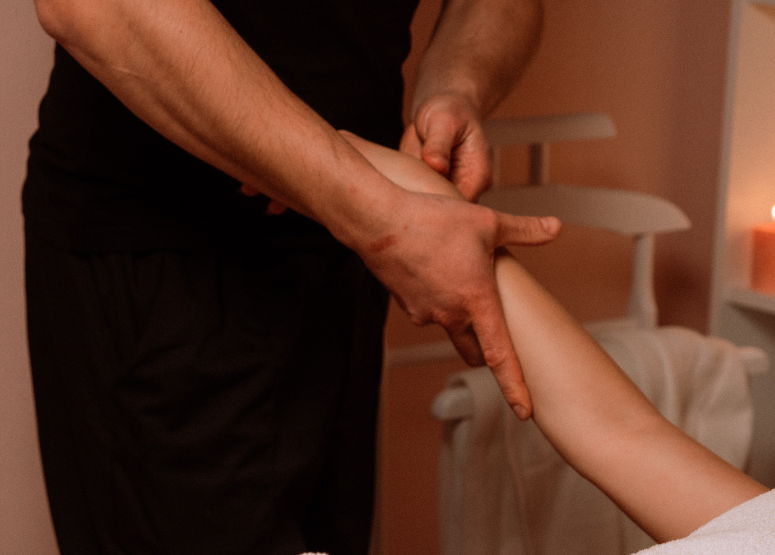THIS is My Mission
June 27, 2022 Author: Renée
A client came in for what was to be a "routine" 30-minute massage prior to her chiropractic adjustment. As I queried her needs and goals for the session, she turned around, traced her left rhomboid area, and said "They can never get me to move right here! Also, my neck."
As per usual, upon re-entering the room after washing my hands, I folded up a couple of hand towels (ceremoniously known as "spa towels" in the industry), and tucked one underneath each of her extremely forward-rolled shoulders, in order to relieve pressure on her trapezoid/rhomboidal area (the area between the shoulderblades). She immediately wriggled into them and commented that it felt good to have them there, supporting her shoulders.
I began by palpating her entire back, noting the areas of tightness, areas of atrophy, and that pesky, inflamed, over-exerted rhomboid on her left side. I moved slowly, applying gentle compressions; then I slid my hand beneath her shoulder and carefully lifted the shoulder up toward her back to stretch the pectoral muscles that were holding the rhomboids hostage from the front. As I did so, I explained how the pecs and the traps/rhomboids are antagonists of one another, and that by relieving the strain on the muscles in the front, the muscles in the back will be freer.
As I moved up to her upper traps/levator scapulae (upper shoulders/where the shoulders and neck meet), I found a world of tight, intense muscles. I asked her to take a deep breath, and as she did so, her entire shoulder girdle moved along with the breath. I had found the real culprit: like so many of us, she had spent who knows how many decades breathing with her shoulders, rather than her diaphragm.
I began to explain how to allow her breath to pour into her belly like water pouring out of a pitcher into a bowl. Still face-down, she quickly noticed the difference in her shoulders as I gently worked them while she practiced diaphragmatic breathing for the first time.
With not much time remaining to our session, I had her turn over and let me "borrow" her arm. Having her continue her belly-breathing, I bent her elbow to hold her hand up in the air. She subconsciously both "helped" and "resisted" me at the same time, as we are wont to do. We talked about how difficult it is to give up control of our most precious possession: our body.
We practiced her letting me hold her arm up (without resistance) and dropping it, letting it fall into my hand, like a modified version of those trust exercises they do where you're supposed to fall backwards and let your teammate catch you. She sighed as she realized that she actually *could* trust me. It wasn't so much me being trustworthy as it was that she had realized that she was able to trust at all.
"If I were to come see you [regularly], could you teach me how to breathe like this; how to relax?"
Suddenly she blurted out, "If I were to come see you [regularly], could you teach me how to breathe like this; how to relax?" Then she started telling me how she was in the process of recovering from a particular traumatic event in her life, and how she thought that learning how to "breathe and relax like this" would help her in that process. I smiled to myself-- This right here is exactly my mission with my massage work.
Releasing the tight muscles, "fixing" the postural irregularities, even the moving of lymph from areas of congestion to areas of non-congestion are all secondary to this, for me. Facilitating health and healing through empowering people to reconnect with their bodies -- and to trust in a way that has eluded them for a long time (perhaps "forever") -- THIS is my mission.
First written: October 6, 2021

